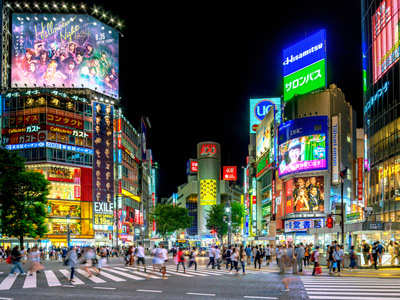This GCSE Geography quiz looks at the opportunities and challenges of urban change. Urbanisation is the migration of people from rural areas to urban areas. It is occurring globally and gives rise to many opportunities and challenges. In MEDCs, about three-quarters of the population lives in a town or city but in LEDCs, the figure is less than half. Urbanisation can offer a better quality of life to rural inhabitants, but that doesn't always happen.
One of the main reasons for urbanisation is the population increase. Since the middle of the twentieth century, the world population has increased by nearly a billion every 10 years. Before 1950, the world's major cities were almost all in MEDCs, but that has changed. As populations in LEDCs have boomed, a large proportion of the rural population has migrated to cities looking for work, a better standard of living and a more reliable food supply.
There are other reasons for the growth of urban populations such as better healthcare in cities giving a lower infant mortality and greater life expectancy.
As a city grows, it offers some major challenges, one of which is traffic congestion. This then leads to increased pollution and a shortage of adequate parking places in the city centre. City centres usually developed before the existence of motor vehicles, so the roads are not really suited to cars, vans, buses and lorries. In LEDCs, local and national government does not have the money to spend on urban infrastructure so the over-used roads are in a state of disrepair. In MEDCs, city authorities are introducing some form of traffic management scheme - park and ride, vehicle exclusion zones, charging to use the city centre, banning diesel powered cars and even providing electric bikes for people to borrow. In LEDCs, there is less money available to spend on developing these schemes.
It's not just traffic issues that cause problems as urban centres change and develop, the increasing demand for housing is an issue. In the UK, building new, affordable housing is expensive. Much development takes place on the urban-rural fringe as that is where land is more readily available. When urban renewal became necessary in British cities, originally it consisted of knocking down old houses and building new ones. This has now changed and the authorities renovate old houses where possible. This helps to retain the community spirit. In LEDCs, where the authorities choose to do something about it, they flatten slum areas and rebuild. This tends to lose the community spirit but improves general welfare.
Rapid urbanisation in LEDCs leads to the development of settlements called shanty towns. The migrants either cannot afford housing in the city or cannot find anywhere to live. Shanty town housing is built illegally, from scrap materials, is overcrowded and does not usually benefit from sanitation, clean water or refuse collection services.








